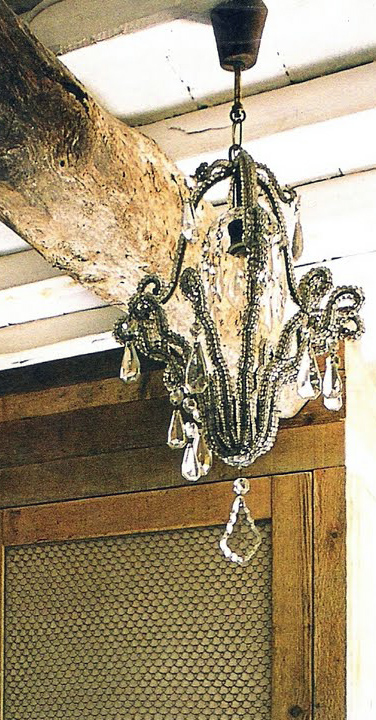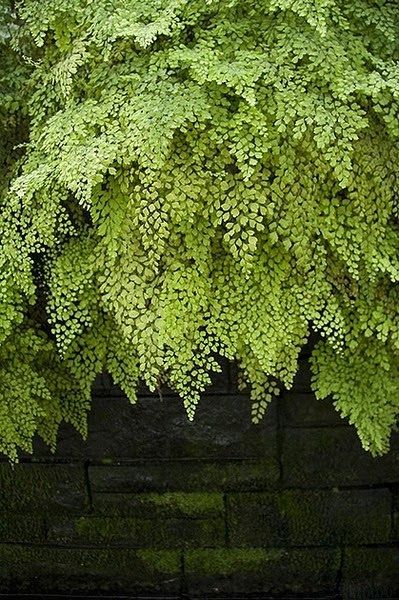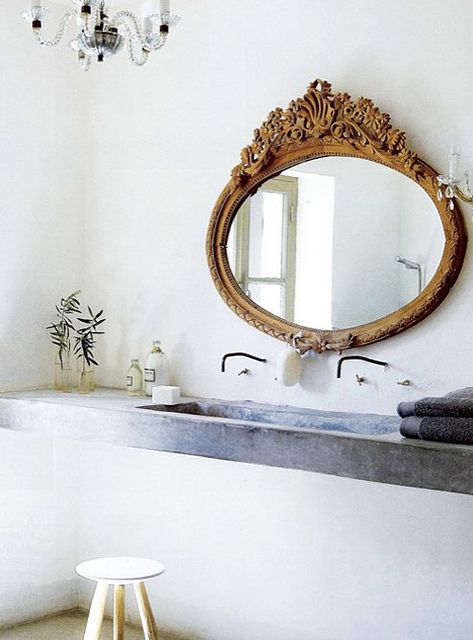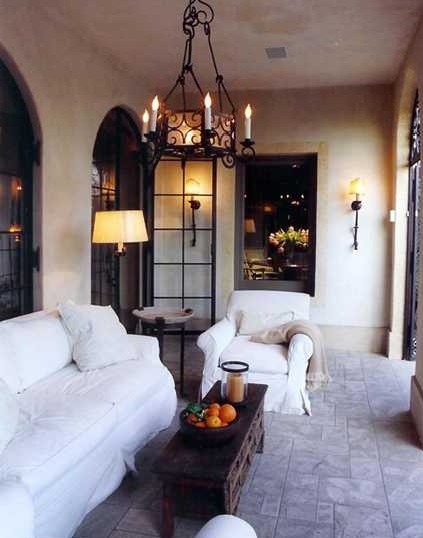In my own design work and a common theme you will notice throughout l&l is that I gravitate towards neutral color schemes and rooms that often have unadorned walls—save for beautiful light fixtures or the beauty of the stone or plaster finish. I prefer very subtle pattern (if any), opting for tone-on-tone more often than many colors, particularly for the fixed or main features of the design.
I love the contrast of, say, a gleaming industrial pendant juxtaposed with an ancient stone wall or a bejeweled chandelier hung over an antique farm table as the drama in the space.
Accent colors and additional textures are infused into the room by the use of natural elements such as flowers and plants and things I use every day like a dark wood bowl of sunny lemons or a glass vase filled with lush, aromatic basil sitting on the counter.
It occurred to me that I prefer a neutral home environment for the same reason a chef prefers a white plate—the better to showcase the colors and textures of her creations. For me, the calming neutral rooms and unadorned walls act as a beautiful backdrop to showcase the people living there and to highlight the essential elements of life that will ultimately add vibrancy to that space.
A basic but powerful question to ask in design is:
Have I left room for living?
This may seem overly simplistic, but it can be an interesting concept to think about:
When you step back to assess a room or area of your home, you are not seeing yourself as part of the picture. —And, most likely, we’ve shooed out anyone else who may have been there, too!
Usually, when we analyze a space and try to determine whether we have “enough” in the space, we are referring to the furniture placement, the artwork and all the other objects that make up a room’s decor. However, in order to get an accurate picture of the room as a whole, we need to envision the inhabitants there, as well.

Not only do we interject our physical presence—including the way we look and the clothes we wear—we also impart our personality and energy each time we enter a room. All of this is sensed by us and “takes up space” in the room—whether we are aware of it on a conscious level or not—adding to how we perceive the room and how we feel there.
In art and design, we refer to negative and positive space. In a room, on a wall, in the pattern of a fabric, the negative space refers to the blank areas and the positive to the filled/occupied areas. So assess a room this way and ask yourself:
- Have I left enough room in my design for the expression of the people living here?
- Will they feel uplifted and inspired in this space or overwhelmed and secondary to the “design” in the space?
—In the simplest of terms:
Is there enough negative space for a positive experience?(!)
Editing is key in a successful design and once you remember to visualize the people in the space and all the items essential for their wellbeing, you may realize that you don’t need to purchase as many purely “decorative” objects as you originally thought.
What is wonderful about this is that many of the items essential in day-to-day living (necessities you already buy) can be as beautiful as they are serviceable—functioning as the art and accents in the room. Not only is this a boon to your budget; it generates a life well-lived, every day.
The kitchen, the heart of the home for most of us, has many opportunities for this.
There is an amazing selection of color and texture in the array of fruits, vegetables and herbs available to us—items you most likely have on your grocery list already. All it takes is a little thoughtful planning to store and display them artfully until you are ready to use them.


I see the plants, flowers, food, books, friends, family, pets—all the interest and vibrancy of life lived well.
Photo credits in order of appearance:
1. Côté Maison; 2. Côté Sud Aout-Sept 2003; 3. Hildreth Lane; 4. unknown; 5. Côté Ouest, Avr-Mai 2006; 6. Showhome.nl; 7. Collage via pinterest; 8. David Price; 9. flickr; 10. Bungalow Classic Tumblr; 11. Fresh Farmhouse Tumblr; 12. t’ achterhuis; 13. image by L, l&l at home; 14. Laurie Steichen; 15. fireplace via t’ achterhuis; 16. French Home by Josephine Ryan; 17. Elle Decor Italia

















